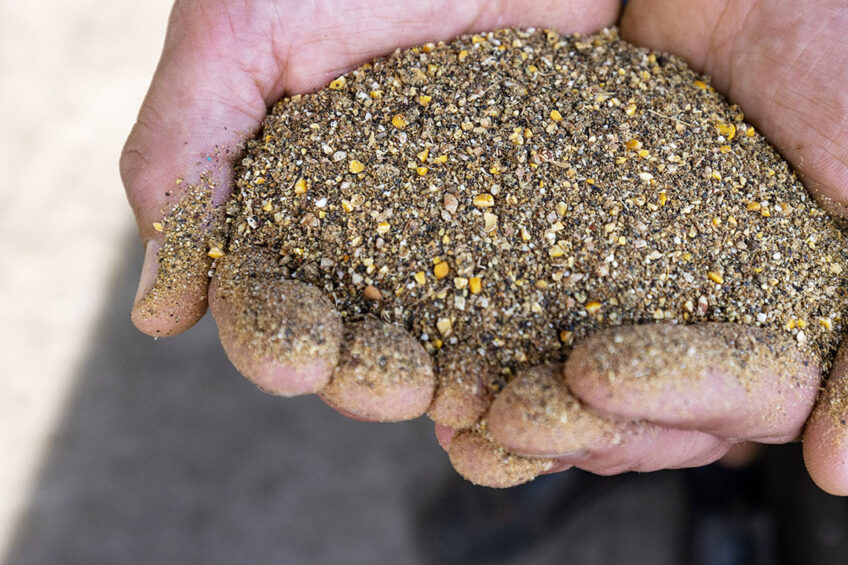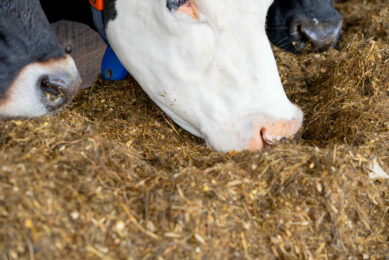Strategies for reducing dairy feed costs

With proper management of the feeding system, the feed cost will be reduced and the production efficiency and profitability of dairy enterprises will be improved. The following is a review of some feeding management strategies that help achieve this target.
Grain storage
The storage method is an important factor affecting feed quality and the farm economy. Field surveys in Egypt, for example, have revealed that in most private farms, feed is stacked under shelters where it can be frequently subject to mould damage and invasion from rodents, wild birds, and/or insects.
Many of these problems could have been alleviated if the feed is properly stored in silos. Moneywise, it was estimated that the cost of a 20-tonne silo can be recovered in 3 years as a result of saving the value of the feed damaged or lost during this period under the current poor storage conditions.
Manipulation of concentrate ingredients
In studies conducted at the University of Georgia, USA, it has been demonstrated that peanut meal could be used at 5% of the total ration in place of soybean meal as an attempt to reduce feed costs (US$140/tonne for peanut meal vs US$225/tonne for soybean meal). The only source of concern about the peanut meal is its possible contamination with aflatoxins. However, when only 5% peanut meal is used in the ration, the level of aflatoxins in the mixed feed would be much too low to be of practical concern.
Hay drying
The use of chemical drying agents such as potassium carbonate can improve the drying rate of the cell wall of the stem material by breaking the waxy layer of the outer stem so that moisture can escape. This enables the stem to dry about as quickly as the leaf, i.e., the treated hay requires 34 hours to dry to 75% DM, while untreated hay requires more than 50 hours to dry. In this way, the chemical treatment can reduce the possibility of field losses by up to 70%, which makes it cost-effective.
Silage conservation
Shown in Table 1 are the effects of the silage storage method on annual costs and annual net return (US$). The difference here may be attributed to the following factors:
- The magnitude of exposure to mould damage and/or aerobic deterioration of silage.
- The nutritive losses that cause a drop in milk production, or otherwise necessitate additional supplements to meet the herd energy and protein requirements.
Use of plant extracts
Additives formulated with certain plant extracts such as tea leaves and grape skins can improve feed efficiency and production levels due to the presence of polyphenols in these materials, which improve the utilisation of feed nutrients and also fight against oxidative stress and associated pathologies.
In a study, the addition of a few grammes of these additives increased protein efficiency by 2.7 points, and reduced nitrogen discharge in the form of urea by 31% per day with milk production improved by 3.8%. The profitability of animal production can thus be improved even in the context of rising prices and changing raw materials.
Protected protein and fat
Dietary protein can be protected against degradation either by selecting feeds with low protein solubility or by treating feeds with heat or formaldehyde. Such strategies lead to improved protein utilisation and energy balance, thereby increasing lactation performance and economic returns of the milk produced (Table 2).
Feeding of protected fat to dairy animals has been shown to give a profit of US$1.3/cow/day, besides improvement in reproductive performance and the health of animals. An additional profit of US$0.6 per animal per day can be made when feeding by-pass protein together with the protected fat.
Use of NPN
The profitability of substituting NPN for natural protein supplements in dairy cattle diets depends on several factors including the cost of the NPN source, the relative price of the natural protein which is being replaced, and the animal response to substitution, usually reflected in changes in milk yields. The same basic principles apply to NPN used in large and small herds, but the risks and benefits increase with herd size.
Enzyme supplement
Studies have shown positive effects of enzymes on feed intake, nutrient digestibility, growth performance, manure nutrient excretion, etc. The costs of artificial enzyme preparations may, however, limit the use thereof under practical farm conditions. Economic advantages could be obtained when using natural sources of enzymes such as dried fig. The cost of this product may vary from one part of the world to another but, on average, it costs around 1/3 of the cost of commercial enzyme preparations.
Group feeding
Group feeding allows for maximum utilisation of least-cost formulation and also facilitates mechanised feeding, thereby reducing the labour required. In one study, the grouping of cows based on their specific nutritional needs has resulted in a saving of $39.0 – $47.0 per cow per year.
Rodent invasion
A 250-gramme rat can eat its weight in feed each day. This means, for example, that a farm with a total population of only 50 rats can easily lose tonnes of feed every year. A rat can also contaminate 10 times the amount of feed it eats with its droppings, urine, and hair, thereby making it unusable for animals.
The cost of waste feed may be even higher, given the worldwide increases in feed prices (about +0.22 US$ per kg of feed) following the recent Covid-19 pandemic period. Attempts should, therefore, be made to control rodent invasion by using possible means.
References are available from the author upon request.
Join 13,000+ subscribers
Subscribe to our newsletter to stay updated about all the need-to-know content in the dairy sector, two times a week.










